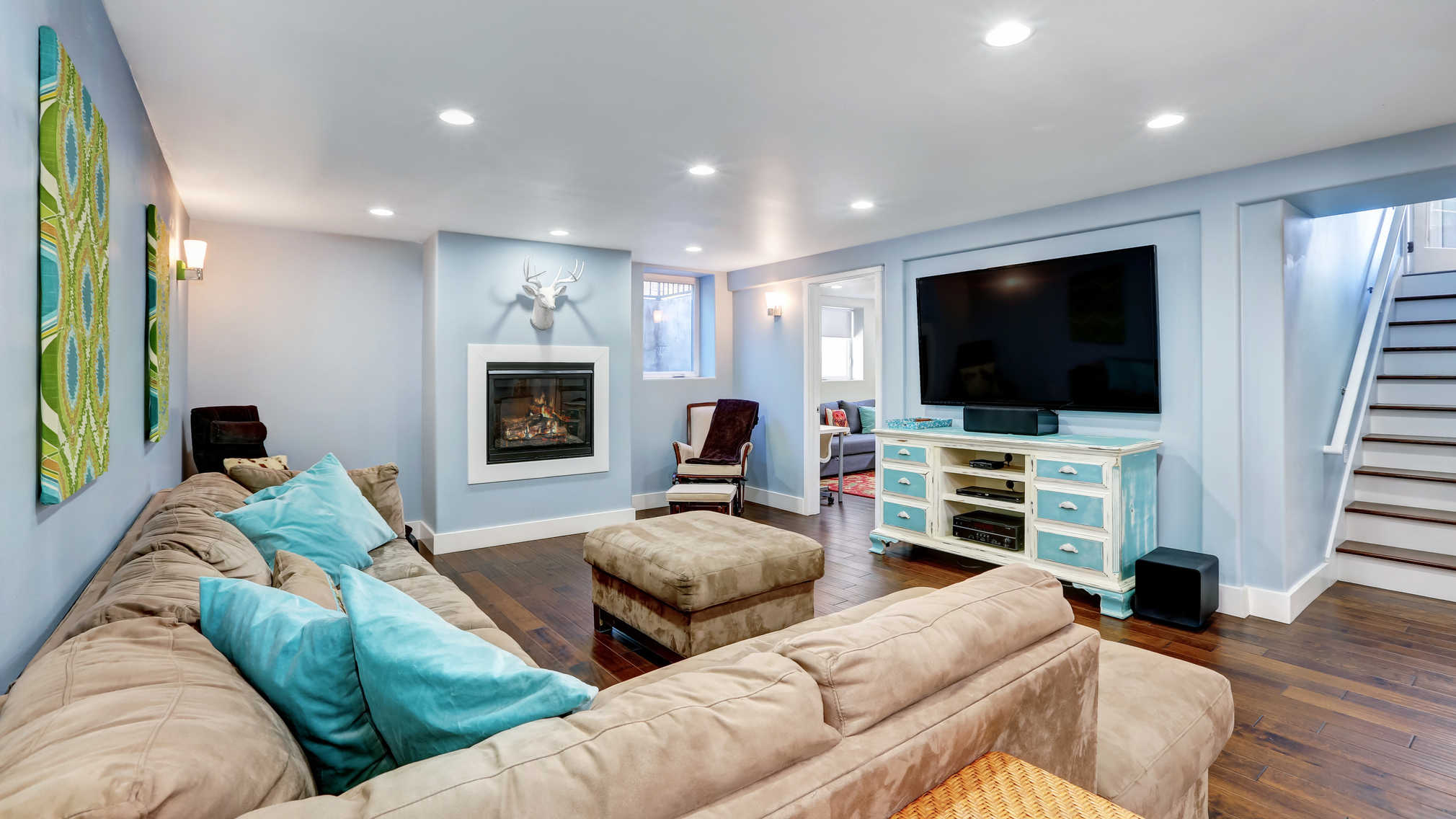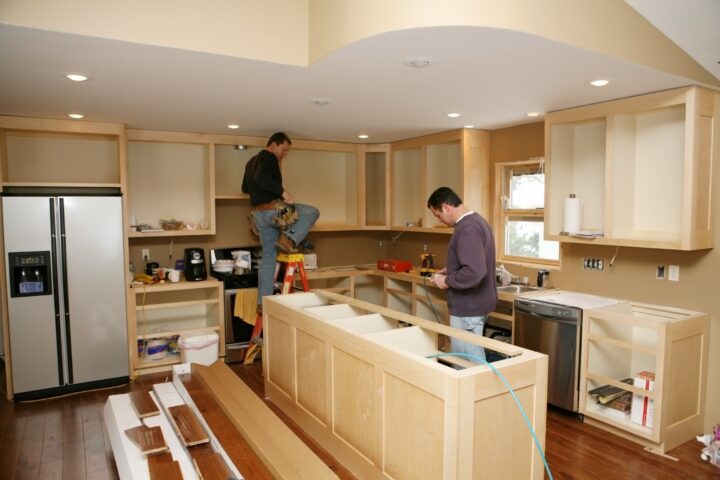Does a Finished Basement Add Value to a Home?
Ready to finish your basement before selling your home? Read this guide before you call a contractor.


A finished basement can mean valuable space for everything from an extra bedroom, to a home office, to that home theater you’ve always wanted. But whether the time and expense of finishing a basement will actually add value to your home depends on how much work the basement needs to become livable space and what you intend to use it for.
Typically, finished basements don’t tend to be as valuable to buyers as main-floor living space and above-grade bedrooms. A main-floor addition would likely be more valuable than a finished basement, but your costs could be much higher.
As with any big renovation, it's important to note that when finishing a basement, you may not recoup all of your investment. It's usually advised to finish a basement for your own enjoyment, then recoup some of the money spent down the road when you decide it's time to sell.
Should I finish my basement?
Whether you should finish your basement depends on your lifestyle, your local real estate market, your financial resources and your goals in finishing the space. For example, let’s say you want to create a flexible entertainment space in the basement by adding a full bath and a wet bar. The improvement could bring an average 70 percent return on investment (ROI), and whatever you don’t recoup when you sell, could be worth it for the years that you’ll use the extra space.
Types of finished basements
The return on your investment for finishing your basement will depend on the type of renovation you choose. But it also depends on the existing structure you have to work with.
There are three primary types of finished basements. Your renovations options will vary based on your home’s structure and your budget. For example, you’re likely to have more options with a walk-out basement than one that’s accessible only through internal stairs.
Here are the main types:
Walk-out basement
Generally, a walk-out basement is the most attractive to buyers. A walk-out usually has a full-size door (often a slider) that leads to outdoor space, like a backyard or patio. This type of basement is more like a ground floor, usually because the home is built into a slight slope. This allows for bigger windows and more natural light — something buyers love. Walk-outs also can be more easily turned into Accessory Dwelling Units with their own separate entry, making them attractive to buyers who want to generate rental income to help pay the mortgage.
Standard lot basement
This is what you may think of when you picture a traditional basement. A standard lot basement is underground, with concrete walls and limited natural light from small windows near the ceiling. Turning a standard basement into a bedroom could require you to install an egress window that meets local building codes, which typically means the window must be large enough for a person to exit through it in case of an emergency. Standard basements sometimes have a separate entrance to the outdoors. Given the lack of natural light, they tend to be less attractive to buyers at resale.
Garden-level lot basement
A garden-level basement represents a middle ground between a standard lot basement and a walk-out basement. It’s partially above ground and partially below ground, due to a somewhat sloping lot. A garden-level lot basement may have a combination of full-size windows and small window wells.
In a competitive buyers market, your home can stand out among other for-sale homes if it’s one of only a few with a finished, functional basement.
How appraisers evaluate finished basements
To understand how appraisers calculate value when it comes to basements, you'll need to know three key terms:
- Above-grade: Above-grade refers to a room or living area that is located above ground — not in the basement. .
- Below-grade: Below-grade refers to rooms or living areas below ground, in the basement.
Appraisers may start with a rough gauge of the price per square foot of your house; how much of your home is above-grade versus below-grade can make a difference. Below-grade living space is worth about half that of above-grade living space. So, if the price per square foot in your area is $150, your basement price per square foot would be $75. Appraisers may also calculate the price per square foot for the entire home, then divide it by the gross living area.
To establish the value of your home, appraisers run “comps,” comparing your home with similar homes in your area that have sold recently. When appraising a home with a basement, skilled appraisers will only compare homes that have similar amounts of above-grade living area. For example, if your home has 1,500 square feet of above-grade area and 500 square feet of basement space, an appraiser wouldn't compare it to a home with 2,000 feet of above-grade living area. So, if you're doing your own research on comparables, make sure to keep this in mind to avoid overpricing your home.
Tips for finishing a basement to add home value
Completing an unfinished basement isn't as simple as just adding some drywall and flooring. You'll also want to check local laws and permit requirements. Another consideration when planning a basement remodel is to weigh the type of layout you want to create with the potential of the available space. Professional tips like maximizing lighting and selecting moisture-proof materials can help during the planning phase as well.
1. Check the local laws
There’s a good chance you’ll need a permit to finish your basement, and checking with your local jurisdiction about the cost of permits and what it takes to get your project approved should always be your first step.
Homeowners are sometimes tempted to skip the permit process, since it's another cost. But if you do get caught, you may have to pay a hefty fine. It's important to note that reputable contractors will refuse to work without a permit, and if you want the job done right — and safely — you won't want to use an under-the-table contractor.
Additionally, renovations without permits can be a big red flag for buyers during a home inspection or disclosure process, sometimes causing them to want to renegotiate or even walk away from the deal.
2. Choose a function
If you're finishing a basement for your own use, you'll want to add the rooms that make the most sense for your lifestyle — maybe you need a guest bedroom, a bigger laundry room or a playroom for your kids. But if you're finishing a basement for resale purposes, you'll want to consider what sells best in your market. And remember that any basement used as a bedroom is going to have to meet local regulations around egress windows that allow residents to exit safely in an emergency.
It's important to remember that the style, look and quality of the finishes in your basement should match the rest of your home.
3. Select your layout
In recent years, buyers have looked for open floor plans. One challenge people face when finishing basements is working around load-bearing walls and systems like the water heater, electrical box and furnace. Before you get too far into your planning, talk to your contractor about what's feasible in your specific space.
It’s also noteworthy that according to the Zillow Group Consumer Housing Trends Report 2024, 60% of buyers in the last year said it was extremely important that a home included a spare or guest bedroom. So if your home doesn’t have an above-grade guest bedroom, that might be a smart addition.
4. Check your ceiling height
Standard building code calls for at least 7-foot ceilings (always check with your local city official's office). But in a basement with limited light, the higher the ceilings, the better. Pipes and ductwork are two of the key reasons basements end up with low ceilings, so have a conversation with your contractor about what can be done to maximize ceiling height.
5. Prioritize light
If you are able to create a walk-out basement, you'll add a lot more natural light, which will not only make the space more enjoyable for you but also make the basement more attractive to buyers.
But even if you're only able to finish your standard lot basement, you'll still want to focus on light. Compensate for the lack of natural light by adding as much lighting as possible. Recessed lighting can be a great way to create all-over brightness in a basement, without causing low-ceiling clearance issues.
6. Choose the right basement flooring
When finishing the basement floor, pay extra attention to flooring materials. In most cases, you won't be able to install hardwood floors in basements because of moisture issues that can cause warping and gapping.
Good options are high-quality carpet or carpet tiles (both of which can combat the cold feeling commonly found in basements), or quality vinyl if you live in a warmer climate and keeping cozy is less of a concern.
7. Consider testing for radon
If you’re going to be spending more time in your basement after the remodel, heed the EPA’s advice and test for radon, a naturally occurring radioactive gas that enters homes through the ground. Testing is easy, and there are steps you can take to reduce your risk and exposure.
As with most home improvements, make sure you hire licensed, qualified contractors. And if you’re DIYing, make sure your skills are up for the job. Home improvements can add value, and you move closer to a return on your investment if the work is done right.



